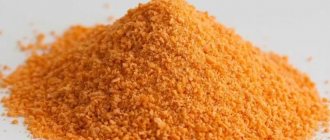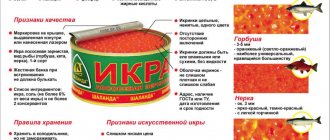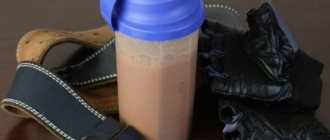Why change toothpaste periodically?
Many microorganisms accumulate in the mouth of every person. With regular and high-quality oral hygiene, bacteria and microbes cannot cause any harm to the body and teeth. If a person neglects the recommendations of specialists regarding daily brushing of teeth and uses low-quality brushes with hard bristles, the risk of developing serious dental ailments and health problems increases.
Food particles and hard plaque accumulating on the surface of the enamel are a favorable environment for the growth of bacteria. Over time, carious cavities may appear in the patient’s mouth, tooth sensitivity to cold and hot will increase, discomfort while eating, unpleasant odor, etc. will appear. Advanced caries can lead to the complete loss of one or more teeth.
A good toothpaste does an excellent job of removing plaque, freshens breath and strengthens the enamel, making it more resistant to external negative influences. In the case when a patient has several dental diseases, an integrated approach is required, that is, the use of several pastes. They can be alternated or changed every few months.
Storage after opening the tube
Storing the paste in the bathroom will be more reliable if you place it vertically, with the tip of the tube down. This minimizes the interaction between the contents of the tube and the air. This storage method will somewhat slow down the oxidation process.
- It is more correct to store tubes of paste in a special closed cabinet designed for the bathroom.
- Do not forget to screw the tube cap tightly after each use of the paste, otherwise the harmful effects of oxygen on the cleaning product cannot be avoided. And if, before using the product, it turns out that the tube was not closed tightly, it is better to squeeze out the upper part and throw it away.
- After opening the tube, the composition should not be stored for longer than 2 - 6 months, and for children's paste this time is reduced to 1 month.
- Most often, manufacturers indicate expiration dates for toothpastes after opening. To make it easier to find, there is an image of an open jar on the product box.
Why can't the color of the strip serve as a guide?
If you follow this logic, then toothpastes with a green stripe should cost significantly more than those with a black stripe. When conducting a comparative analysis of the assortment range, such a pattern is not visible.
If this statement is taken as an axiom, then the shelf life of toothpaste should be different for products with black and green labels, since natural products always have a shorter shelf life. But if you compare products with markings of different colors, this is not confirmed.
The paradoxical nature of the idea that color matters also becomes apparent after analyzing tubes of children's toothpaste.
The black stripe on them is very common. But it is difficult to suspect manufacturers that they will produce dangerous and low-quality products for small consumers. This category of goods is subject to increased requirements for certification.
What to do with expired toothpaste
Gel toothpaste should be thrown away, its composition completely deteriorates and is unsuitable for further use, and thrifty housewives can use regular opaque toothpaste for household work:
- Cleaning taps, mixers and plugs
in bathroom sinks. Toothpaste contains tiny natural abrasives, such as silica, that make metal surfaces shine. - Removing odor from hands
. Toothpaste contains ingredients that are used to freshen breath and remove bad breath. This can be used if you need to remove the unpleasant smell of fish, gasoline, etc. from your hands. - Removing marker from surfaces
. If there is a child in the house, he often leaves traces of felt-tip pens or markers on glass, mirrors, and cabinet furniture. Toothpaste can clean such stains: use a little toothpaste and a soft brush or microfiber cloth. - Cleaning the iron
. Sometimes a resinous residue remains on the soleplate of the iron, which accumulates over time and interferes with high-quality ironing. The abrasive composition of the paste will help cope with this, polish and clean the working surface of the iron. - Cleaning white shoes
. With a soft brush and a little toothpaste, your light-colored shoes will look clean and refreshed.
Proper storage conditions
For unopened packaging, the rules are specified in GOST 7983-99.
Standard requirements for the conditions for keeping toothpaste include a temperature range from 0 to +25°C, protection from direct sunlight and location away from heating devices.
It is not recommended to store tubes that you will not use in the near future in the bathroom.
The tube cap should be tightly closed to avoid unnecessary contact with air, and to minimize it, it is recommended that the tube be kept in a vertical position with the cap down.
If these conditions are met, the shelf life for a sealed tube will be from two to three years .
In our article you will find information about decoding product barcodes.
By unsealing the tube cap, you can count on maintaining the characteristics of the paste for two to six months , and for children - no more than one month.
Mysterious multi-colored stripes on the tube
There is an opinion that strips on toothpaste hide information about quality, composition and safety. Therefore, many buyers began to pay attention to its color, located at the adhesion site.
If you look at all the products presented, you can see that the color scheme of the stripes is not so diverse, there are only four of them.
- Green, which, according to many, including leading experts in various medical programs, indicates the natural composition of the paste. Associative thinking allows you to compare the color green with ecology and nature. This means that such a product should contain no chemical components, and the shelf life of the toothpaste should be short.
- Black is the opposite of green. It is believed that toothpaste with this label consists exclusively of chemical elements and is completely free of natural ingredients. And this category belongs to the cheapest segment, since black color indicates low-quality products.
- Red and blue stripes on toothpaste supposedly indicate that the product is of average quality. It contains approximately equal amounts of natural and artificial ingredients.
Expiration dates of toothpastes from popular manufacturers
When buying toothpaste from famous manufacturers, pay attention to the expiration date indicated on the tube:
- Colgate can be used for 3 years from the date of release indicated on the package.
- Blend-a-Med has a shelf life of 3 years.
- The medicinal composition of Lakalut involves storing the tube closed for 3 years.
- The Splat tube indicates a shelf life of 2 years for the teeth cleaning product.
- New pearls remain good for 3 years after the release date.
- Aquafresh can be used for 3 years.
And again, experts note: the indicated periods indicate storage of toothpaste in a hermetically sealed package, with a foil coating under the lid. As soon as the foil is torn off, you count down a couple of months and you shouldn’t use the composition longer. It won't do much harm, but it won't do any good either.
Why does toothpaste have an expiration date?
To receive the American Dental Association or the Russian Dental Association seal of approval, toothpaste must meet strict standards for safety and effectiveness. The shelf life of a toothpaste is determined solely by the effectiveness of its ingredients, so if necessary, you can, of course, use a product with a recently expired shelf life: such toothpaste does not pose an immediate threat to health, but it will not bring the stated benefits either. However, a paste that has been lying in the cupboard for several extra months, and even more so, years, loses its effectiveness and can harm health, like any drug that has long expired. The fluoride or other active ingredient in it may begin to break down, reducing the level of protection against cariogenic bacteria.
The American Dental Association has worked with researchers and industry experts for many years to develop a standard for toothpastes, and the Russian Dental Association conducts a thorough examination of the quality and consumer properties of toothpastes before assigning it the StAR Seal of Approval. Regular use of low relative abrasiveness (RDA) toothpaste throughout your life helps protect your enamel from abrasion. Proper brushing of teeth with high-quality toothpaste, which strengthens weakened enamel, ensuring its remineralization, can reliably protect sensitive teeth. In order for toothpaste to have the most effective effect, the storage period and conditions must be observed in accordance with the manufacturer's recommendations.
Active ingredients in toothpaste
Most toothpastes contain five active ingredients, including fluorides, abrasives, flavoring agents or sweeteners, humectants and detergents, all of which are listed on the tube box. Thanks to saccharin or sorbitol, the paste has a pleasant sweet taste. Sodium lauryl sulfate, which is part of many cosmetic products, is a detergent that acts both as a humectant, giving toothpaste a soft consistency, and as a foaming agent for better cleaning of teeth.
How to store toothpaste
Always close the tube after use and make sure there is no dried toothpaste around the spout where dust and dirt can settle. It is better to store toothpaste, like toothbrushes, in a closed cabinet, otherwise bacteria present in the bathroom air may become contaminated with hygiene items. In addition, storing it in a cabinet helps protect the paste from extreme heat, which can cause its components to begin to separate from each other and become thinner, losing effectiveness.
Question No. 2. Are toothpastes that contain antiseptics safe?
Not if you use such pastes constantly. As a rule, pastes containing antiseptics (triclosan, chlorhexidine, hexitidine) are prescribed for inflammatory gum diseases. You should brush your teeth with such pastes for no more than two weeks in a row. With their frequent use, antiseptics, designed to destroy only harmful bacteria, can smoothly switch to useful ones: a certain balance between microorganisms is disturbed, resulting in painful processes.
Toothpastes containing antiseptics as the main components, for example, Lacalut Aktiv, PresiDENT Active, SPLAT Professional ACTIVE, Elmex Aronal, Blend-a-med Pro-Expert Gum Protection, are considered harmless, but for their correct use, consultation with your doctor is necessary.








